If the Bucs traded the #1 pick in this year's draft, it would surely be one of the most dramatic swaps in team history, but where would it rank among the trades that have had the most impact on the team?
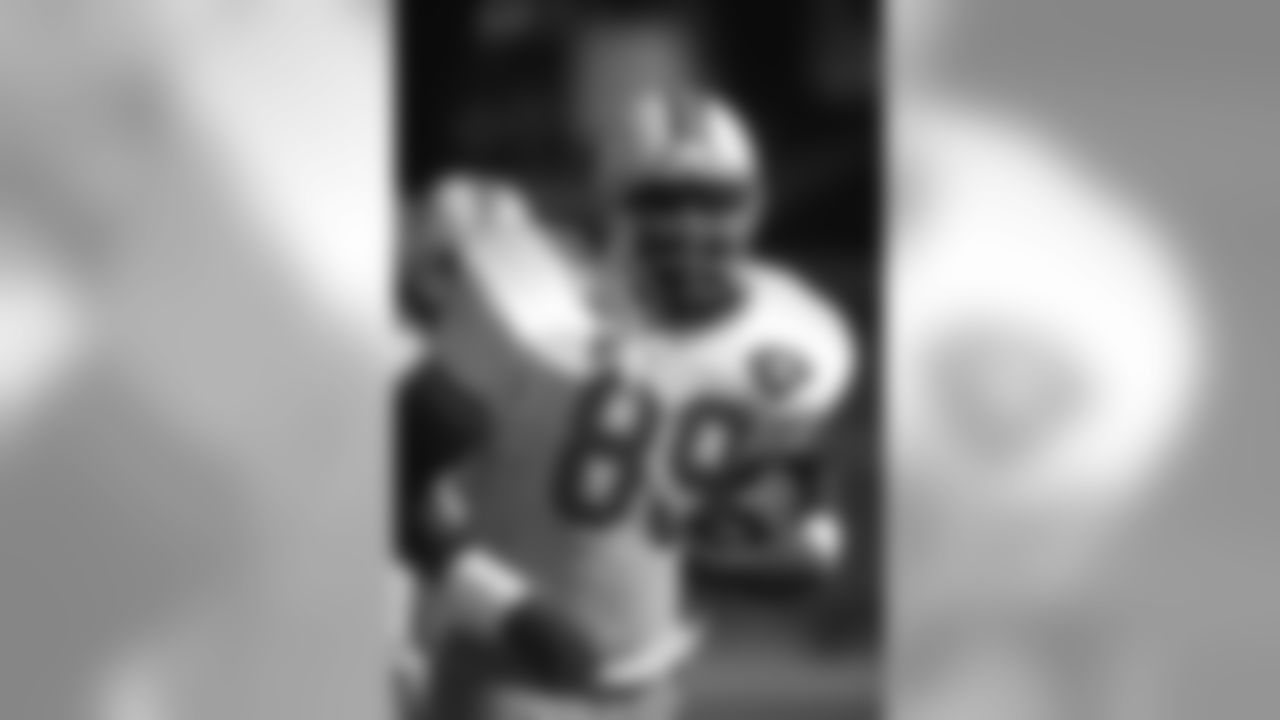
General Manager Rich McKay somehow managed to swing a trade with Cleveland, sending TE Harold Bishop to the Browns for a second-round pick. Yes, the Bucs drafted Bishop in the third round, saw him have a blank of a debut campaign and then got a second-round pick for him the following year.

At the time, the team was rumored to be interested in Purdue's Mike Alstott as a potential first-rounder, and that proved half-right. The Bucs' didn't want to use a first-round pick on a fullback, but their ace in the hole was that Bishop-generated selection high in the second round. At pick #35, Tampa Bay did indeed select Alstott, and he went on to have one of the best careers in franchise history.
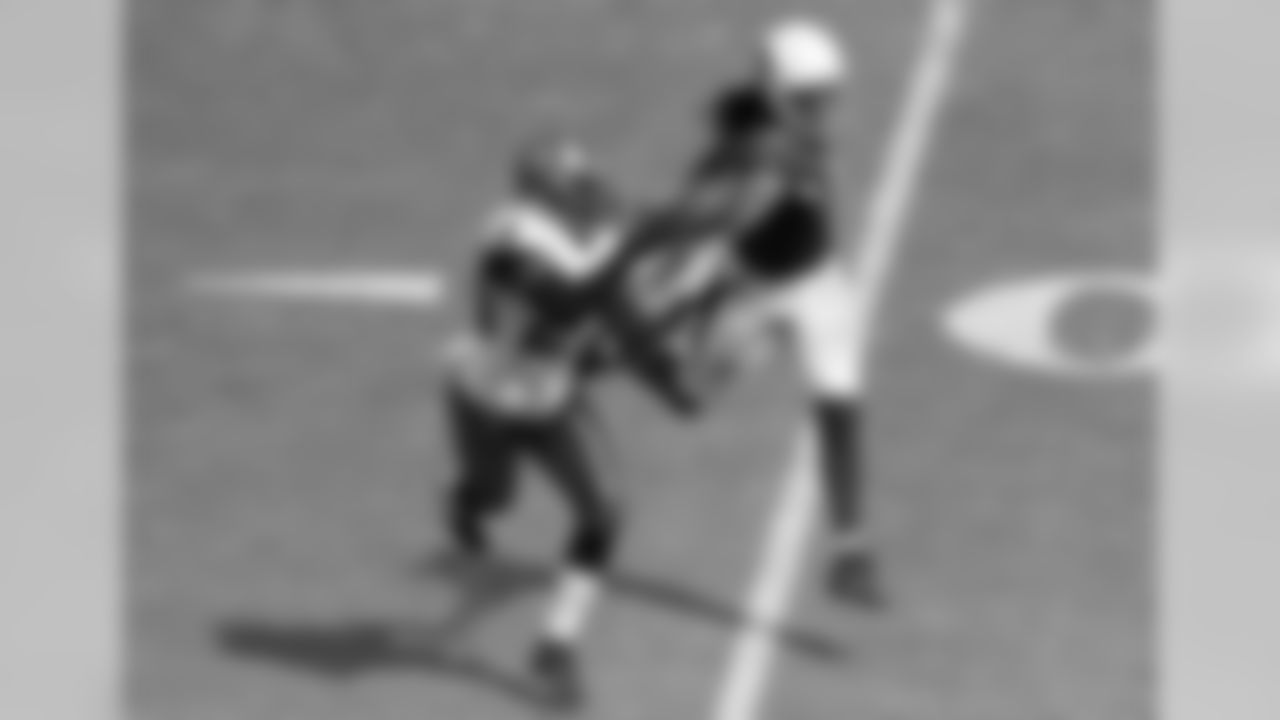
Buccaneers trade a 2013 first-round pick and a 2013 fourth-round pick (that could become a third-round pick) to the New York Jets for CB Darrelle Revis.
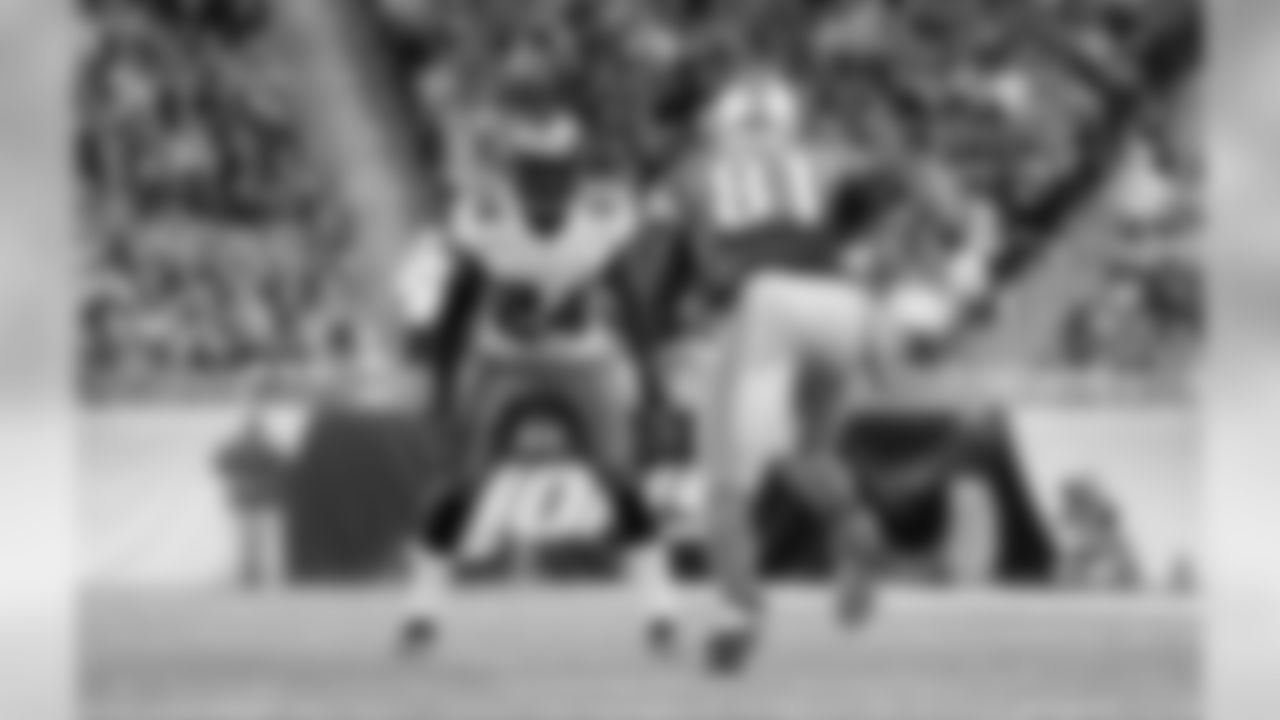
One of the most persistent debates of the 2013 offseason was whether the Jets really would trade Revis. The Buccaneers, believing they had showed promise in 2012 and hoping to break a playoff drought in 2013, made the bold move, sending that first-round pick to the Jets and signing Revis to a lucrative new deal.
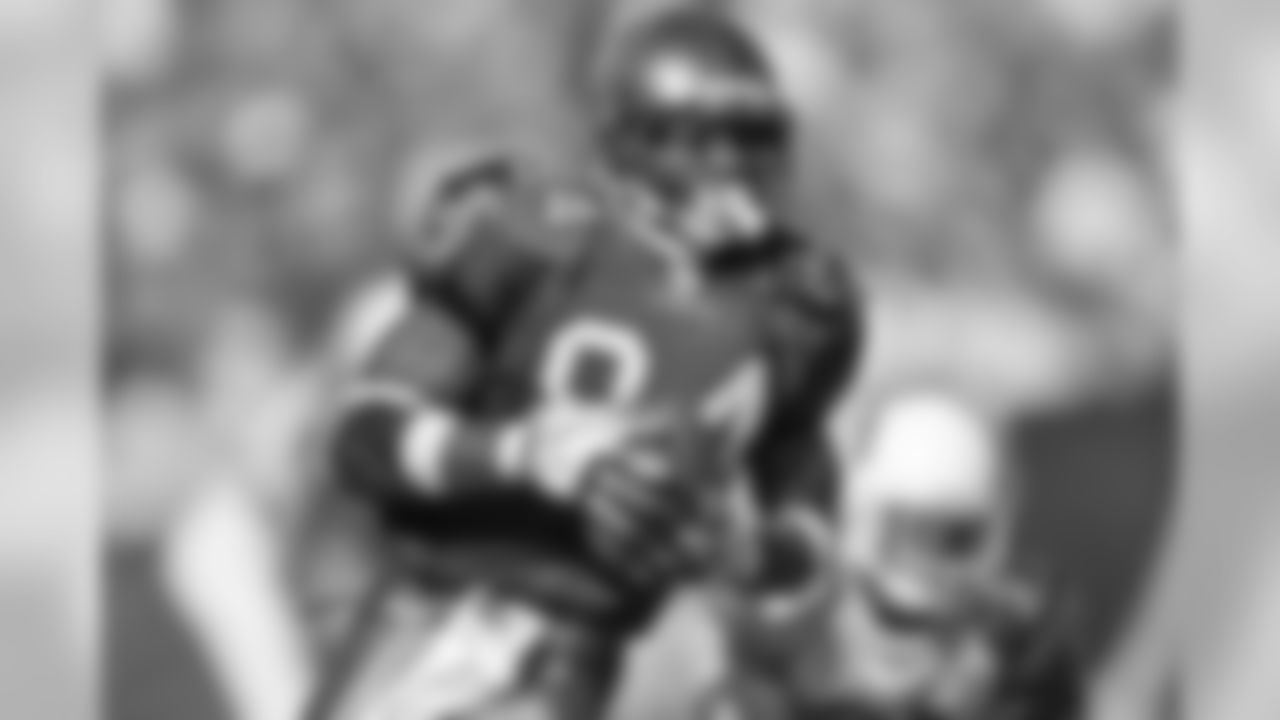
Buccaneers trade WR Keyshawn Johnson to the Dallas Cowboys for WR Joey Galloway. From 2005-07, Galloway became the first Buccaneer to record three consecutive 1,000-yard receiving seasons, putting up 22 touchdowns in that span and averaging 16.6 yards per grab. On the Bucs' all-time receiving yardage list, Galloway ranks just ahead of Johnson, at #4, with 84 more yards.
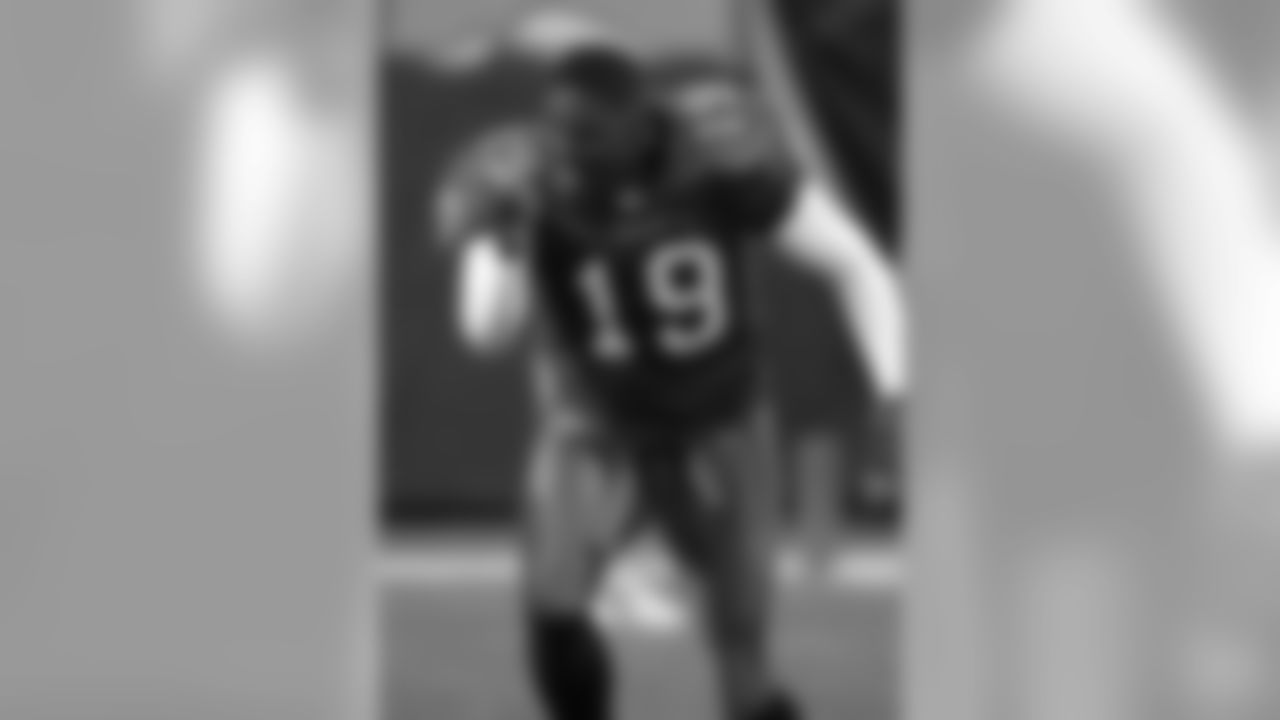
Getting new scenery were two receivers who had been high-profile names in the NFL since the 1990s and, coincidentally, two players who had once been traded by their original teams for a pair of first-round picks. That's how the Bucs got Keyshawn Johnson in 2000, producing a marriage that was sometimes uneasy but did include matching championship rings in 2002.
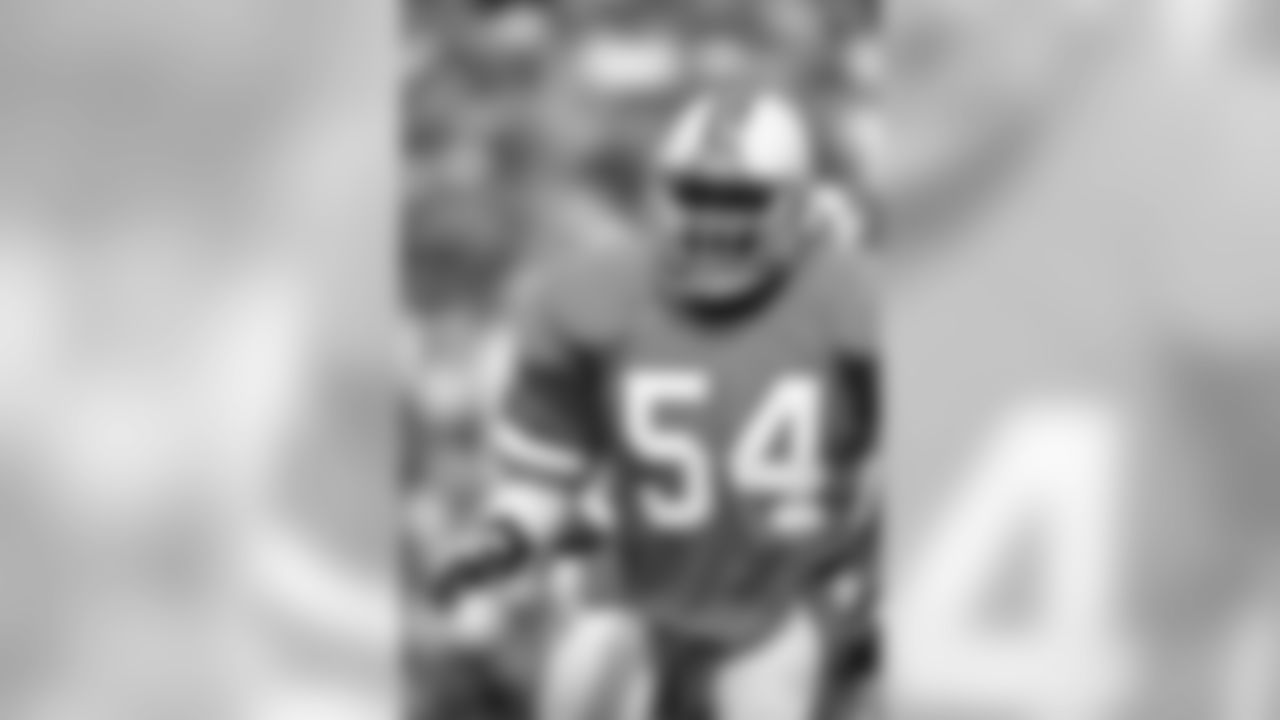
Buccaneers trade 1977 seventh-round pick to the New York Jets for LB Richard Wood.
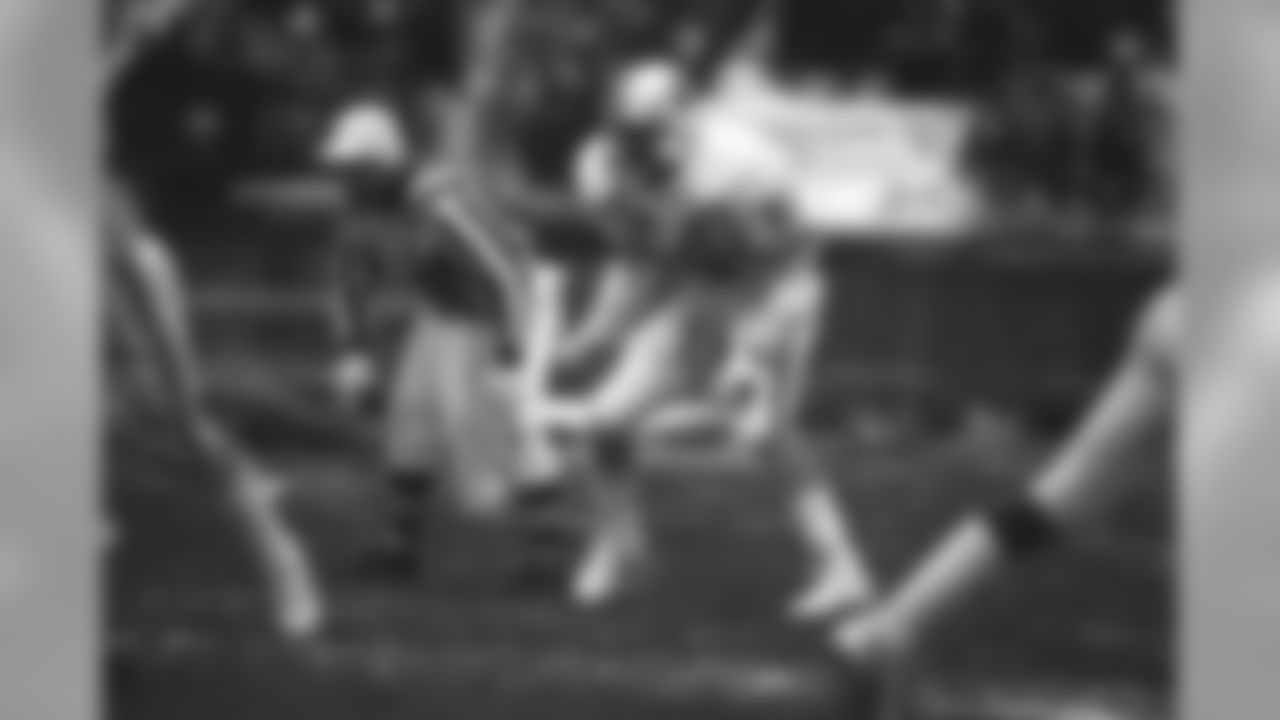
The best draft-pick-for-player trade the Buccaneers made during their wheeling-and-dealing 1976-78 days, the best was one made on the eve of the '76 season. On the first day of September, the Buccaneers sent a seventh-round pick in the '77 draft to the Jets to get linebacker Richard Wood, an All-American on McKay's USC teams. Wood was drafted by the Jets in the third round but had an unremarkable rookie season in New York.
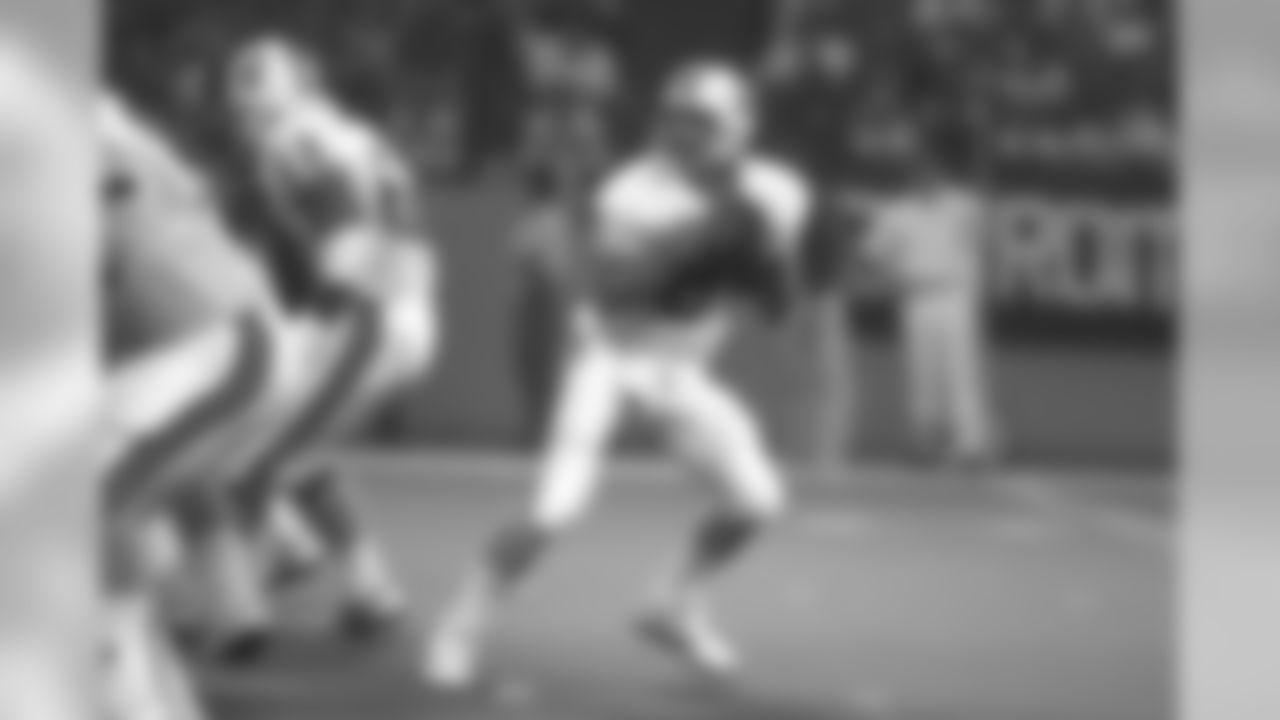
Buccaneers trade QB Steve Young to San Francisco for cash, a 1987 second-round pick and a 1987 fourth-round pick.

The Bucs didn't do badly in the deal, as the second-round pick netted them a very good linebacker in Winston Moss and the fourth-rounder brought back productive receiver Bruce Hill. What makes this one of the team's most significant swaps, however, is that it marks the only time the franchise has ever traded away a future Hall-of-Famer.
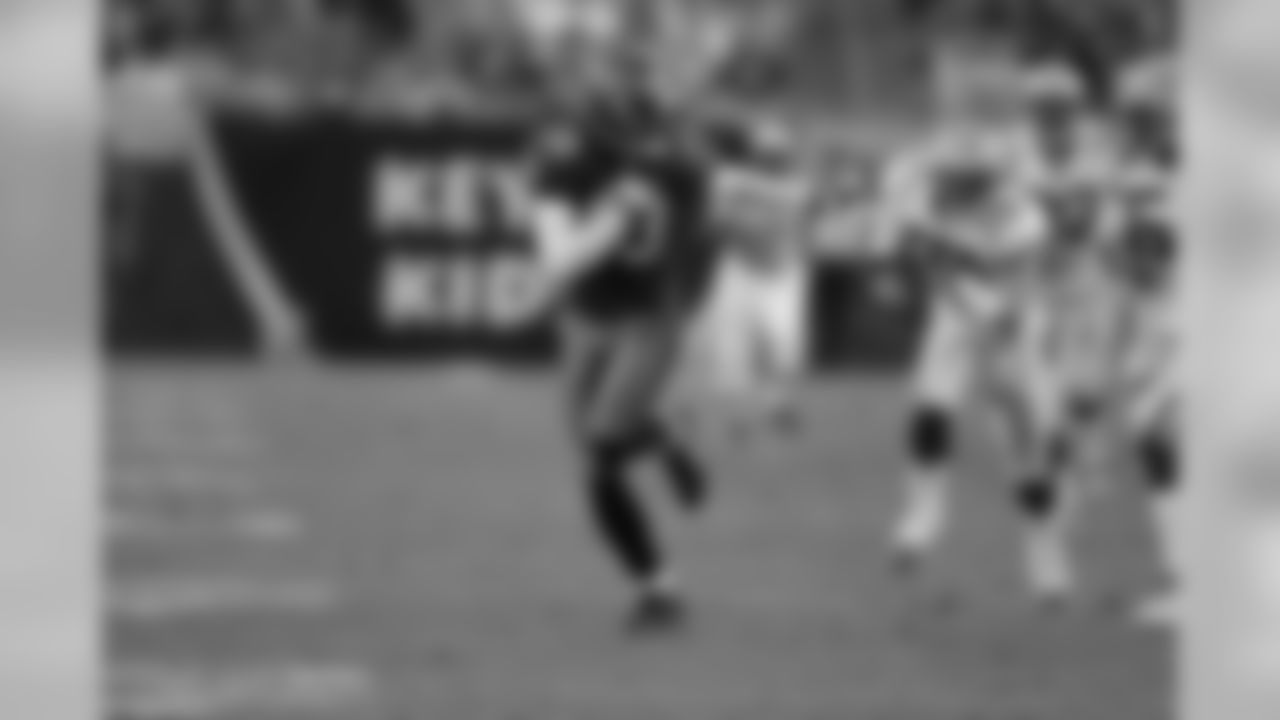
Buccaneers trade two 2000 first-round picks to the New York Jets for WR Keyshawn Johnson.
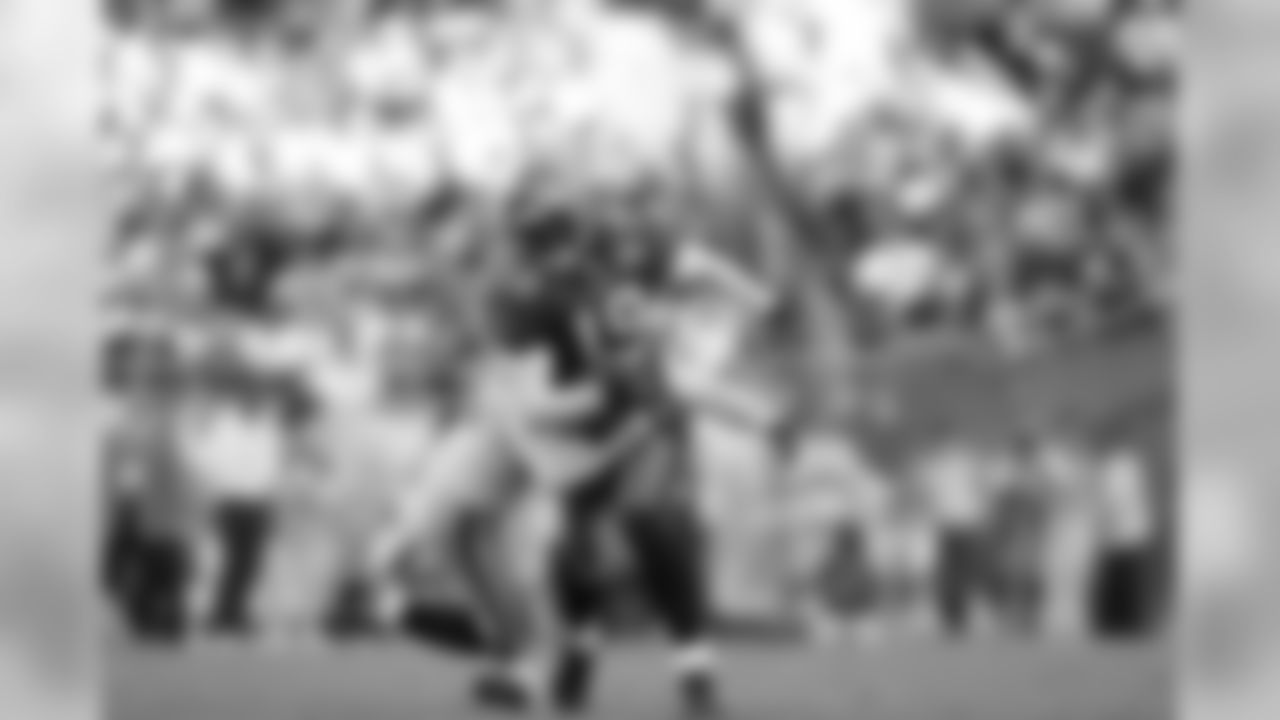
The Jets already had two first-round picks in hand and apparently chose the rebuilding route by agreeing to send their most productive player to the Buccaneers for two more. New York became the first NFL team ever to make four picks in the first round of a draft. Tampa Bay, meanwhile, felt like it had found the final piece of the puzzle.
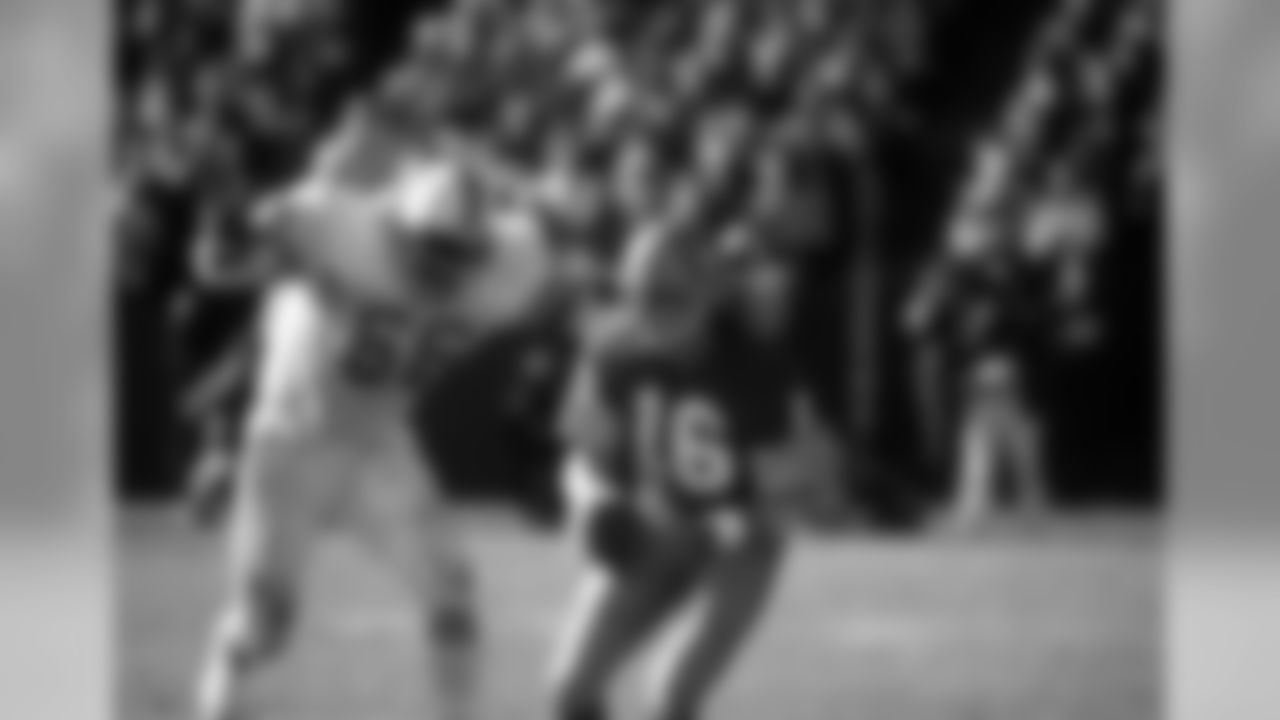
Buccaneers trade a 1983 first-round pick to Chicago for a 1982 second-round pick used to select DE Booker Reese.

Tampa Bay traded its 1984 first-round pick to get a quarterback a few months later, sending it to Cincinnati for Jack Thompson.

Buccaneers trade a 1978 first-round pick (#1 overall) to Houston for 1978 first-round pick (#17), 1978 second-round pick, 1979 third-round pick, 1979 fifth-round pick and TE Jimmie Giles.
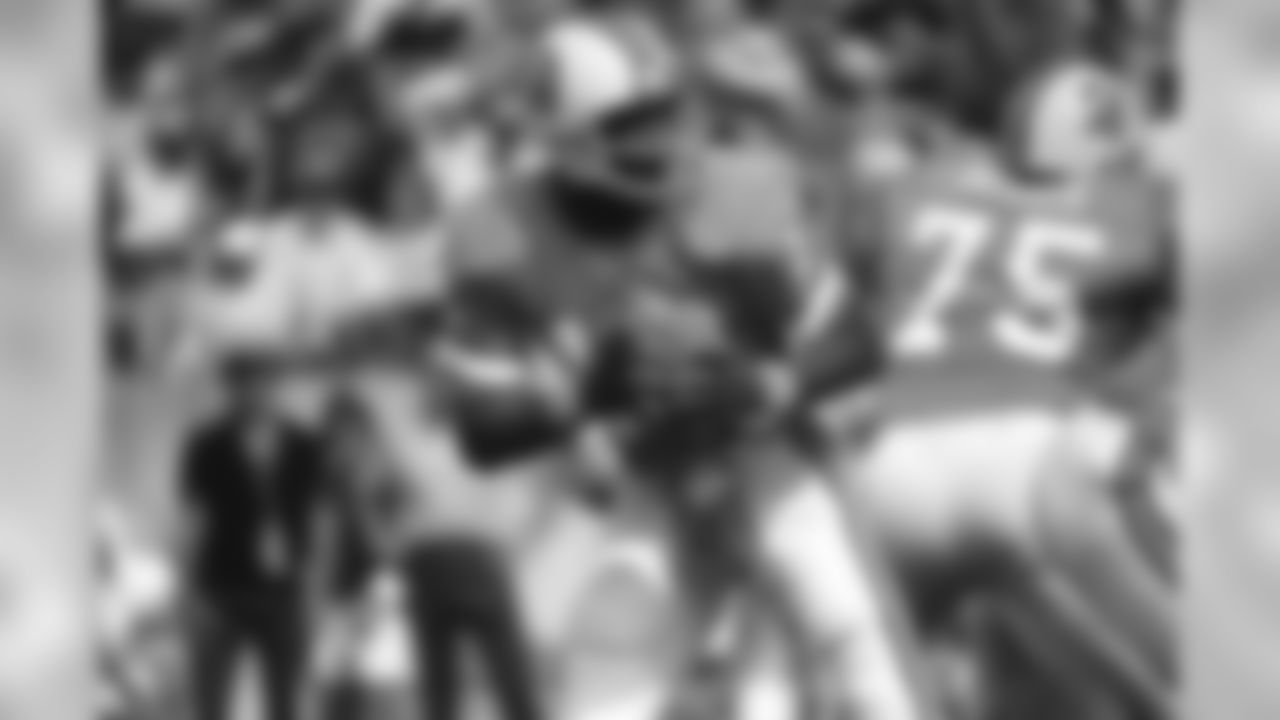
The Bucs wanted Grambling quarterback Doug Williams and obviously were correct in believing they could move down that far and still get him. Williams may be the closest thing the Buccaneers have ever found to a franchise quarterback, and though his Buccaneer career ended in dispute with previous ownership he did lead the team to its first three playoff appearances.
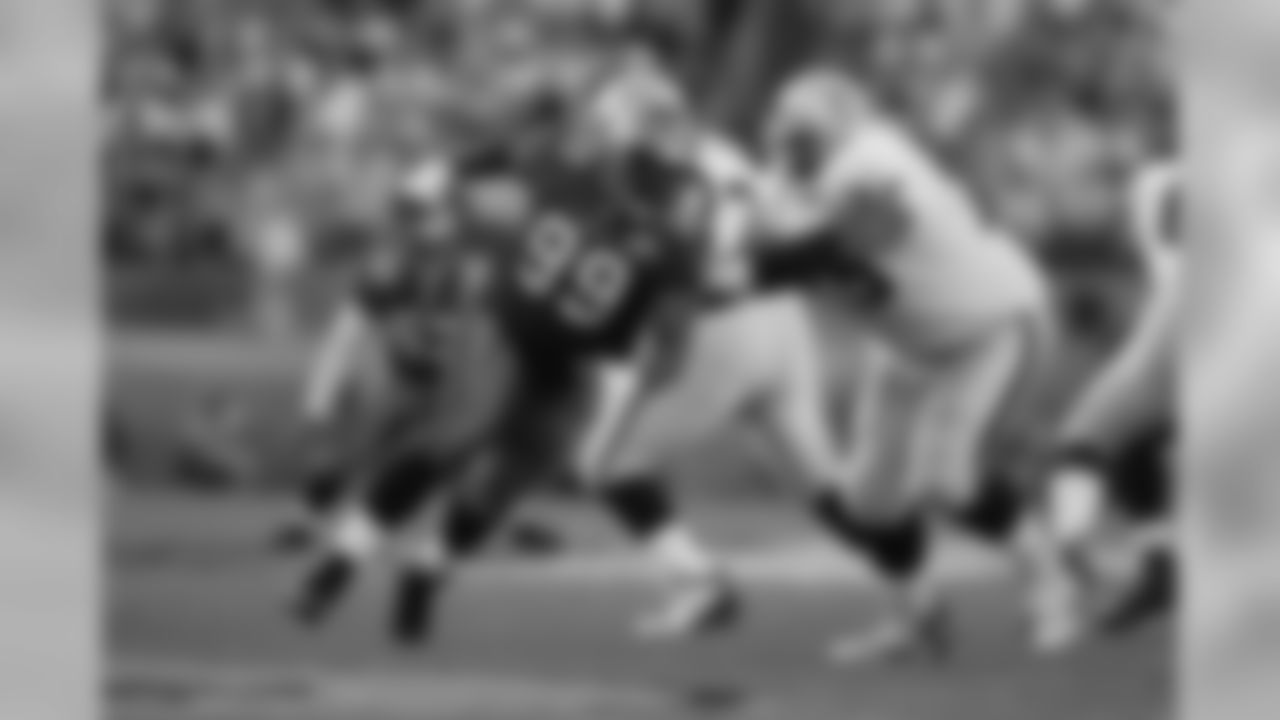
Coming into the day with the seventh-pick in the round, Tampa Bay agreed to trade down five spots with the Eagles, who had their eyes on Combine workout warrior Mike Mamula. The Buccaneers favored another defensive lineman, Warren Sapp, and thought they could still get him at #12. They were right, and that allowed them to turn pick #72 into picks #43 and #63.

As the first round neared a close, another player of whom the Bucs were enamored was still available. So, armed with three second-rounders, Tampa Bay sent their own (#41) plus the second of the two they got from Philly (#63) to Dallas for #28. There they selected linebacker Derrick Brooks.

Buccaneers trade 2002 first-round pick, 2002 second-round pick, 2003 first-round pick and 2004 second-round pick to Oakland for the rights to Head Coach Jon Gruden.
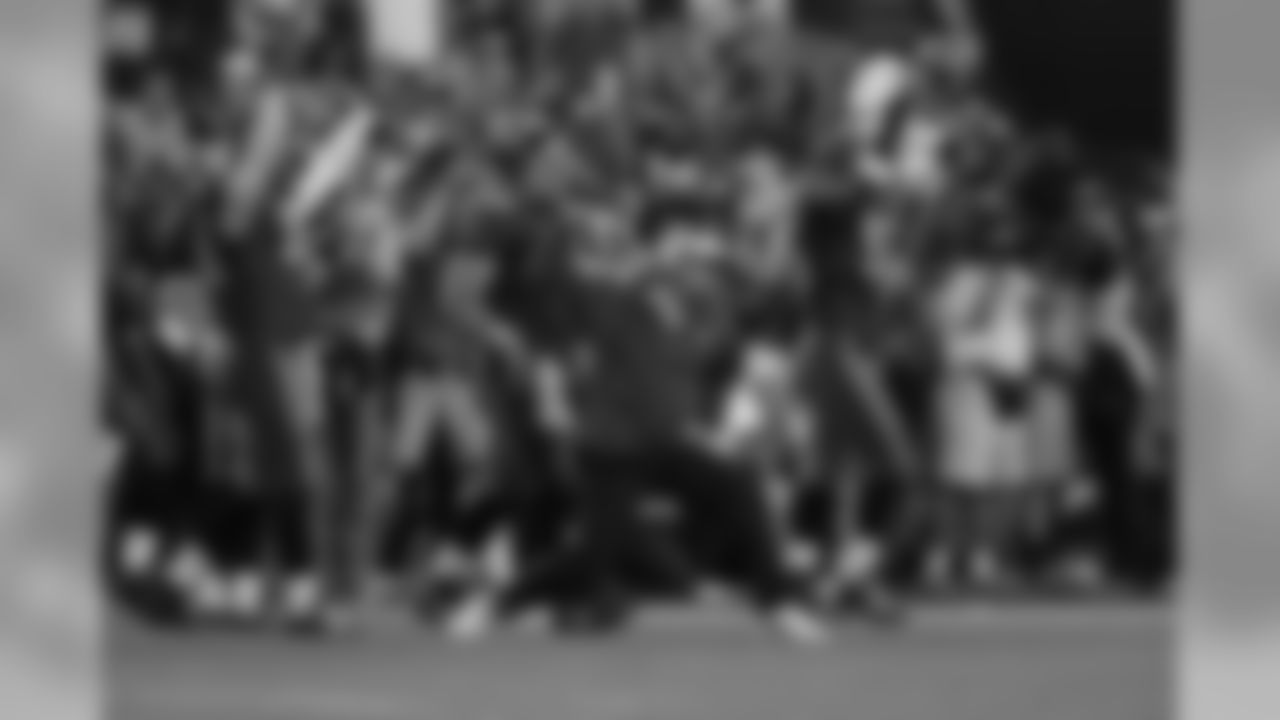
The Buccaneers won their first Super Bowl in Gruden's first year at the helm, and that essentially made whatever price the Bucs had paid worth it. It was an incredibly aggressive move by team ownership, and it worked. Simple as that.
Related Links
Articles
Finalized compensatory picks
All games to be televised
Standouts: Veteran Combine
Top 10 undrafted FAs
Mock draft roundup, 7.0
Photos
VIDEOS
The Tampa Bay Buccaneers own the first overall pick in the 2015 NFL Draft and are widely expected to use it on a potential franchise quarterback. At the Scouting Combine in February, General Manager Jason Licht said his team was "leaning towards using that pick," but notably prefaced the statement with, "[a]ll options are on the table as far as trading the pick or taking the pick."
In other words, the Buccaneers will (and obviously should) listen to any offers sent their way for that coveted top spot. There is, hypothetically, some level of returned trade value – say, a bouquet of first-round picks – that would exceed what the team believes it would get from the top player on its board this year.
This is the first year since 1987 that the Buccaneers have been in the draft's pole position. If they did clear out of that spot, it would obviously be one of the most significant trades in the franchise's four-decade history. Would it be the most significant? The answer would probably not be clear for a couple seasons, after the players selected by the Bucs and their hypothetical trade partner had a chance to prove their respective values.
What we do know is that such a deal would be competing with the ones below, our picks for The 10 Most Significant Trades in Buccaneer History.
We've listed in these in ascending order of significance, with the biggest bombshell at the bottom. Note that some of these deals worked out spectacularly well for the Buccaneers, and some are at the opposite end of that spectrum, but all had a big impact. In fact, we chose to rank these deals by their "significance" rather than making a "best trades" list because sometimes these deals combined both good and bad repercussions. Read on to see what we mean.
10. Buccaneers trade TE Harold Bishop to Cleveland for a 1996 second-round pick (May 19, 1995).
Harold who? Yes, one of the most impactful trades in franchise history involved a player that even some die-hard Buccaneer fans may struggle to remember. Well, here's a quick refresher: Tampa Bay drafted the LSU tight end in the third round in 1994 – high in the third round, in fact – in the same class that started with QB Trent Dilfer and RB Errict Rhett. If that was an attempt by Head Coach Sam Wyche to complete reshape an offense that finished 25th in the league in 1993, it certainly didn't work at the tight end spot. Bishop played in six games as a rookie for the Bucs and didn't catch a single pass.
Despite that, General Manager Rich McKay somehow managed to swing a trade with Cleveland the following spring, sending Bishop to the Browns for a second-round pick. Yes, the Bucs drafted Bishop in the third round, saw him have a blank of a debut campaign and then got a second-round pick for him the following year. That would be good enough, but it got a lot better one year after that when the 1996 draft rolled around.
Cleveland finished 5-11 in 1995, with Bishop contributing 16 catches for 135 yards and no touchdowns. That gave the franchise – which by the 1996 draft had become the Baltimore Ravens – the fifth pick in the second round. Or, to be more precise, it gave the Buccaneers that pick. McKay and new Head Coach Tony Dungy used their two first-round picks to address the defense, unsurprisingly, selecting DE Regan Upshaw and DT Marcus Jones. At the time, the team was rumored to be interested in Purdue's Mike Alstott as a potential first-rounder, and that proved half-right. The Bucs' didn't want to use a first-round pick on a fullback, but their ace in the hole was that Bishop-generated selection high in the second round. At pick #35, Tampa Bay did indeed select Alstott, and he went on to have one of the best careers in franchise history.
Alstott wrapped up his 12-year career after the 2007 season, leaving as the team's all-time leader in touchdowns (71) and Pro Bowls for an offensive player (six). He is also the second-leading rusher and third-leading pass-catcher in team annals and was a key cog in the offense during the 2002 run to the Super Bowl title. Few players have ever been as popular among Buccaneer fans. Bishop, meanwhile, played four NFL seasons and recorded 19 career catches.
A footnote: After using their pick from the Browns/Ravens to get Alstott, the Bucs felt comfortable enough to trade their own second-rounder that year to San Diego for a 1997 first-round pick. Owning two first-rounders for a second straight year, Dungy's Bucs went offense in '97 with what proved to be picks #12 and #16. That trade might have made the list too if it was the San Diego pick that resulted in RB Warrick Dunn, but instead it led to the selection of WR Reidel Anthony. The Dunn pick proved far more impactful on the franchise.
9. Buccaneers trade a 2013 first-round pick and a 2013 fourth-round pick (that could become a third-round pick) to the New York Jets for CB Darrelle Revis (April 21, 2013).
This is surely one of the most dramatic trades the Buccaneers have ever made, but it's significance is blunted by the fact that Revis was only with the team for one season, and it wasn't a particularly good season for the franchise.
Still, it belongs here because it is quite rare for elite, in-their-prime players to be traded in the NFL. Just a year earlier, Revis had been ranked #5 – tops among all defensive players – on the NFL Network's Top 100 Players list. But he suffered a season-ending knee injury early in the 2012 campaign, and the Jets had a new general manager, John Idzik, who needed to get a difficult salary cap situation under control.
One of the most persistent debates of the 2013 offseason was whether the Jets really would trade Revis. The Buccaneers, believing they had showed promise in 2012 and hoping to break a playoff drought in 2013, made the bold move, sending that first-round pick to the Jets and signing Revis to a lucrative new deal.
Revis played well for the Buccaneers in 2013, particularly as the season progressed and his surgically-repaired knee gained strength. The team struggled, however, which led to the dismissal of Head Coach Greg Schiano and General Manager Mark Dominik. When the new management team of Lovie Smith and Jason Licht arrived and went through a thorough evaluation of the roster and the salary cap, they found some numbers that didn't fit their plan. Intending to use the cap space devoted to Revis to address several different positions, Smith's Bucs released the cornerback near the start of free agency, thereby avoiding having that conditional fourth-round pick turn into a third-round pick. That redirection of funds was possible because Revis' contract, while quite large, had been structured in a way that allowed the team to end it without taking a large "dead money" hit on the 2014 salary cap.
8. Buccaneers trade WR Keyshawn Johnson to the Dallas Cowboys for WR Joey Galloway (March 19, 2004).
It seems like Chip Kelly is trying to bring it back into vogue, but the straight-up player-for-player trade is a rare animal in the NFL, as well. Early in the 2004 offseason, the Buccaneers and Cowboys got together to pull off the classic "change of scenery" swap.
Getting new scenery were two receivers who had been high-profile names in the NFL since the 1990s and, coincidentally, two players who had once been traded by their original teams for a pair of first-round picks. That's how the Bucs got Keyshawn Johnson in 2000 (see below), producing a marriage that was sometimes uneasy but did include matching championship rings in 2002.
The partnership fell apart quickly after the '02 Super Bowl season, though, to the point where Jon Gruden's team essentially told Johnson to stay home for the final six weeks of the 2003 season. A divorce was clearly going to follow; as such, it was a pretty decent solution to flip him for Joey Galloway.
The same year that the Bucs got Johnson from the Jets, Galloway was sent to the Cowboys for first-round picks in 2000 and 2001. His 1999 campaign, his fourth and final one in Seattle, had been cut in half by a contract dispute, which was what prompted the receiver-needed Cowboys to make an inquiry as to his availability. Galloway, too, was productive with his second team, though not to the level that Johnson was in Tampa, in part because he lost his first year in Dallas to a Game One knee injury. He was coming off a 34-catch season – albeit one with a league-leading 19.2-yard average – when the Cowboys agreed to the deal with the Bucs.
Galloway got hurt right at the beginning of his Tampa Bay tenure, too, which led to an underwhelming 2004 season and, indirectly, to the explosive emergence of rookie Michael Clayton. From 2005-07, however, Galloway became the first Buccaneer to record three consecutive 1,000-yard receiving seasons, putting up 22 touchdowns in that span and averaging 16.6 yards per grab. On the Bucs' all-time receiving yardage list, Galloway ranks just ahead of Johnson, at #4, with 84 more yards.
7. Buccaneers trade 1977 seventh-round pick to the New York Jets for LB Richard Wood (September 1, 1976).
John McKay's Buccaneers swung lots and lots (and lots) of trades in the franchise's first couple seasons, mostly out of necessity. With the rules for stocking new teams far less favorable than they would become in the subsequent waves of expansion, the Buccaneers and Seattle Seahawks were swimming upstream in the last '70s. They had a largely fruitless expansion draft early in 1976, but otherwise the team's best assets were a whole bunch of draft picks.
Obviously, the Bucs and Seahawks needed to use a good number of those picks to build the long-term foundation of their teams, but it also made sense to flip some of them for useful veterans to help the youngsters along. It made sense, but it wasn't easy. For every Mike Washington acquired in this way, there was a Rockne Freitas.
The best draft-pick-for-player trade the Buccaneers made during their wheeling-and-dealing 1976-78 days, the best was one made on the eve of the '76 season. On the first day of September, the Buccaneers sent a seventh-round pick in the '77 draft to the Jets to get linebacker Richard Wood, an All-American on McKay's USC teams. Wood was drafted by the Jets in the third round but had an unremarkable rookie season in New York. Though the deal took him from an established franchise to one trying to find its footing, Wood blossomed after being reunited with McKay.
The Bucs had some legendary early struggles, losing their first 26 games. However, the defense came together into one of the league's better units relatively swiftly and was the driving force in the team rising to playoff contender from 1979-82. Wood was right in the middle of that, starting from 1976-81. He still ranks sixth on the team's all-time tackle chart, with 855.
Oh, and Wood was the first Buccaneer with a fantastic nickname. It actually followed him from his USC days, where he was known as "Batman" for his creative use of eye black.
6. Buccaneers trade QB Steve Young to San Francisco for cash, a 1987 second-round pick and a 1987 fourth-round pick (April 24, 1987).
The timing of this trade is very telling, as it fell just four days before the start of the 1987 NFL Draft. The Buccaneers happened to own the first overall pick in that draft.
The runner-up for the 1983 Heisman Trophy, Young skipped the NFL to sign a lucrative deal with the Los Angeles Express of the new USFL in 1984. The NFL held a supplemental draft in 1984 for players who signed with the USFL or the CFL, and the Bucs took Young with the first pick. Thus, when he came to the NFL in 1985, it was with the Buccaneers that he signed.
For the next two years, the Buccaneers alternated between Young and Steve DeBerg as their starting quarterback, all the while winning just four of 32 games. Young was clearly talented, especially as a runner, but he struggled mightily along with the rest of the team, which didn't have a lot of talent on hand to help him.
After two years, the Buccaneers had obviously decided that Young was not their quarterback of the future, as they set their sights with the first overall pick on the 1986 Heisman winner, Vinny Testaverde of the University of Miami. Young was now expendable and the Bucs sent him to Bill Walsh in San Francisco, where he would back up Joe Montana.
The Bucs didn't do badly in the deal, as the second-round pick netted them a very good linebacker in Winston Moss and the fourth-rounder brought back productive receiver Bruce Hill. What makes this one of the team's most significant swaps, however, is that it marks the only time the franchise has ever traded away a future Hall-of-Famer.
Young had to wait for almost a half-decade to get the job from Montana, but once he did he turned into one of the best ever. His legs were still a great weapon, but he also became a dynamic passer, routinely hitting triple digits in passer rating in an era where that was far less common. Young led the league in completion percentage five times in a six-year span. He went into the Hall of Fame in 2005.
5. Buccaneers trade two 2000 first-round picks to the New York Jets for WR Keyshawn Johnson (April 12, 2000).
In 1999, Tampa Bay rode a stifling defense and a heady late-season run by rookie QB Shaun King to within a few minutes of the Super Bowl. Facing the Rams and "The Greatest Show on Turf" – an offense that averaged more than 30 points a game that season – in the NFC Championship Game in St. Louis, the Bucs allowed a late touchdown to lose 11-6.
The conclusion was inescapable: Tampa Bay had a world-class defense but might end up wasting it if the offense couldn't at least be competent. There was hope that King would continue to develop as the starting quarterback, and the running game was solid with Warrick Dunn and Mike Alstott, but Tampa Bay hadn't had a standout receiver in years. The Jets' Keyshawn Johnson – the first-overall draft pick in 1996 – was coming off his second straight Pro Bowl campaign but his agent was threatening a holdout.
The Jets already had two first-round picks in hand and apparently chose the rebuilding route by agreeing to send their most productive player to the Buccaneers for two more. New York became the first NFL team ever to make four picks in the first round of a draft. Tampa Bay, meanwhile, felt like it had found the final piece of the puzzle.
That didn't immediately prove true, but Johnson was part of the eventual championship solution. He caught 71 passes for 874 yards while teamed up with King, then broke the team record with 106 grabs for 1,266 yards in 2001 after the arrival of new starting quarterback Brad Johnson. In 2002, the Bucs' defense was still the number-one reason the team went all the way, but Jon Gruden gave the offense a facelift with imports like Keenan McCardell, Joe Jurevicius, Ken Dilger, Michael Pittman and Roman Oben. Johnson led that team with 76 catches for 1,088 yards and five touchdowns, then caught 14 more passes in the three-game run to the title.
The Jets used the two picks from Tampa to take defensive end John Abraham and tight end Anthony Becht (both of whom had fine NFL careers, some of Becht's with the Buccaneers). Given the strength of the Bucs' defensive line in 2002 and the solid work turned in by tight end pickups like Dilger and Rickey Dudley, Tampa Bay was probably better off with Johnson than those two players in pursuit of its trophy.
A footnote: It was another good trade for the Buccaneers that made this one possible. In 1998, for the second time in three years, the San Diego Chargers came calling during the second round of the draft. Once again, the Chargers had their eye on a specific player and were willing to give up a first-round pick in a later draft to get him. The Buccaneers' happily obliged both times. This time, they got a first-rounder in 2000, which proved to be the higher of the two selections they sent to New York to get Johnson.
4. Buccaneers trade a 1983 first-round pick to Chicago for a 1982 second-round pick used to select DE Booker Reese.
The story behind this one, should you choose to believe it, is that a bad phone connection between the Buccaneers' draft room in Tampa and their representative in New York led to the wrong card being turned in for their first-round pick. The team rep had cards bearing the names of G Sean Farrell and DE Booker Reese, and the final decision in Tampa was to go with Reese.
Instead, the Buccaneers got Farrell (who proved to be a pretty decent player, actually). At this point, still very much coveting the Bethune-Cookman project and seeing him fall into the second round, the Bucs got aggressive. They found a trade partner in the Bears and sent their 1983 first-rounder to Chicago for the 32nd-overall selection, which they successfully used on Reese.
Reese, of course, would prove to be a total bust, appearing in just 24 games with seven starts over three seasons in Tampa and recording two sacks. Of course, every franchise fails with its draft picks from time to time, and Reese is far from the only bust on the Bucs' docket. What makes this one particularly significant is the repercussions that went beyond Reese's only failure to contribute.
What stretched this into a bigger problem was the unhappy departure of quarterback Doug Williams after the 1982 season, leaving the Bucs without a viable starter or a first-round pick in 1983. Those two voids became painfully intertwined by the fact that the '83 draft was famously deep in quarterbacks. The Bucs could only watch as John Elway, Todd Blackledge, Jim Kelly, Tony Eason, Ken O'Brien and Dan Marino all came off the board.
Tampa Bay's pick in the draft proved to be #18, which the Bears used on WR Willie Gault. Elway, Blackledge, Kelly and Eason were already off the board by that point, but that still left a couple fine options in O'Brien and Marino. And who knows? Maybe the Bucs would have been motivated enough to use their first-round pick in 1984 to trade up for one of the first four.
Wait, we kind of do know that, because Tampa Bay did trade its 1984 first-round pick to get a quarterback a few months later, sending it to Cincinnati for Jack Thompson in June. If it doesn't seem like the situation could get any worse, be aware that the Bucs' 1984 first-rounder turned into the first overall pick when the '83 team went 2-14 with Thompson at the helm. Cincinnati traded that pick to New England, which used it on WR Irving Fryar.
3. Buccaneers trade a 1978 first-round pick (#1 overall) to Houston for 1978 first-round pick (#17), 1978 second-round pick, 1979 third-round pick, 1979 fifth-round pick and TE Jimmie Giles.
This is a deal that will strike people differently depending upon the angle from which they looking at it.
On one hand, the Buccaneers traded away the first overall pick to a team that used it to select a future Hall-of-Famer. That obviously feels like a missed opportunity. And Tampa Bay traded down a long way, from #1 to #17, without getting an additional first-round pick in the deal. That would seem quite unlikely in today's NFL.
On the other hand, Tampa Bay got the players it wanted. Tampa Bay had drafted a running back, Ricky Bell, with the first overall pick a year before and obviously didn't know Earl Campbell was going to have a Hall-of-Fame career. It makes sense, after taking Bell, to relinquish that #1 spot to a team that needed a running back and then utilize those additional assets elsewhere.
The Bucs wanted Grambling quarterback Doug Williams and obviously were correct in believing they could move down that far and still get him. Williams may be the closest thing the Buccaneers have ever found to a franchise quarterback, and though his Buccaneer career ended in dispute with previous ownership he did lead the team to its first three playoff appearances.
The one player moved in the deal, Jimmie Giles, was a fantastic pickup for the Buccaneers. He went to four Pro Bowlers and was ahead of his time as a tight end who could really stretch the field. Giles was recognized as one of the best players in franchise history when he was inducted into the Bucs' Ring of Honor at Raymond James Stadium in 2011.
The Bucs didn't do much with the other picks they got in the deal, taking G Brett Moritz, DE Reggie Lewis and QB Chuck Fusina, who combined to play in 35 games with no starts for the franchise. Getting Giles kept those three misses from turning the trade into a lopsided disaster. After all, the Bucs could have just stayed put at #1 and taken Williams.
2. Buccaneers make the following trades of 1995 draft picks: one first-rounder and one third-rounder to Philadelphia for one first-rounder and two second-rounders; two second-rounders to Dallas for one first-rounder.
This was a masterful round of draft maneuvering, all accomplished within the span of a couple hours. The results: Two players who are now enshrined in the Pro Football Hall of Fame.
Here's a more detailed account of what Rich McKay and the Bucs did during the first round in 1995. Coming into the day with the seventh-pick in the round, Tampa Bay agreed to trade down five spots with the Eagles, who had their eyes on Combine workout warrior Mike Mamula. The Buccaneers favored another defensive lineman, Warren Sapp, and though they could still get him at #12. They were right, and that allowed them to turn pick #72 into picks #43 and #63.
As the first round neared a close, another player of whom the Bucs were enamored was still available. So, armed with three second-rounders, Tampa Bay sent their own (#41) plus the second of the two they got from Philly (#63) to Dallas for #28. There they selected linebacker Derrick Brooks. Somehow, one pick each in the first three rounds had turned into two first-rounders and a second-rounder and, subsequently, the two players that would be at the heart of the franchise's turnaround.
The Buccaneers' remaining second-round pick was used on S Melvin Johnson, who had little impact in Tampa before being traded to the Chiefs. In fact, very little else of value came out of the '95 draft for the team after the first round. But when a draft starts with Warren Sapp and Derrick Brooks, it's going to be a success no matter where it goes from there. Sapp was inducted into the Hall of Fame in 2013, followed the next year by Brooks.
1. Buccaneers trade 2002 first-round pick, 2002 second-round pick, 2003 first-round pick and 2004 second-round pick to Oakland for the rights to Head Coach Jon Gruden.
That's an unbelievably huge haul for the Raiders to give up their head coach, and the absence of those picks almost certainly hurt the Bucs' depth a few years after their championship.
Oh, but we did mention that championship, right? The Buccaneers won their first Super Bowl in Gruden's first year at the helm, and that essentially made whatever price the Bucs had paid worth it. It was an incredibly aggressive move by team ownership, and it worked. Simple as that.
In addition, the Buccaneers did their best to make the second of those two first-round picks as unpleasant as possible for their trade partners. By winning the Super Bowl in 2002, Tampa Bay slotted itself 32nd and last in the 2003 draft, making the Raiders wait as long as possible to select the serviceable Tyler Brayton. Even better, it was the Raiders they beat in that Super Bowl to tie the whole thing together.






















